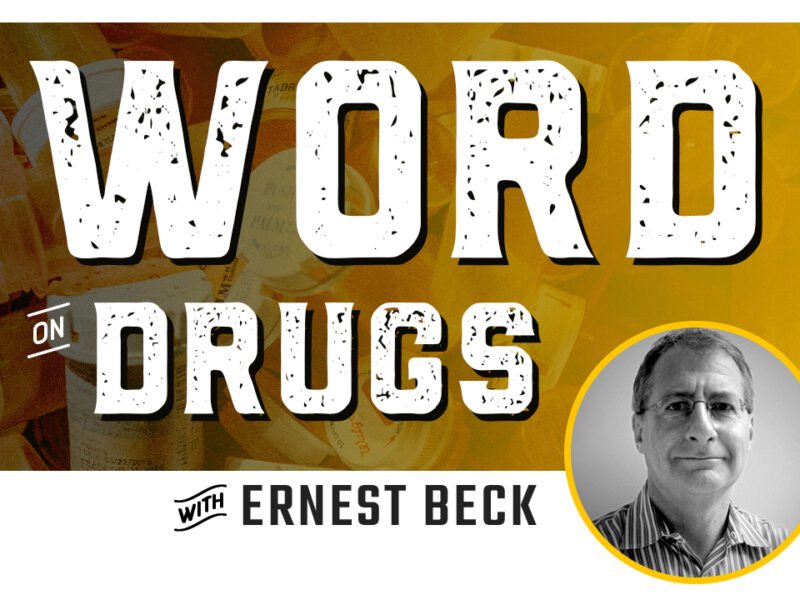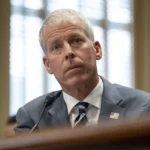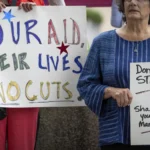Fentanyl Is on the Rise—and It’s Killing So Many of Us
Harm reduction measures at the community level are just as important as policing, incarceration
- Published In: Other News & Features
- Last Updated: Apr 20, 2023

By Ernest Beck
Special to the Wyoming Truth
Tens of thousands of Americans die each year from fentanyl, the powerful synthetic opioid that is now the primary cause of overdose fatalities. Over 70,000 of the record 107,000 overdoses last year involved the drug, which is up to 50 times more potent than heroin. To put this in perspective, that’s one fentanyl death in the U.S. every seven minutes, or more than all those killed in the wars in Vietnam, Iraq and Afghanistan combined.
Young people are dying in a county south of Austin, Texas, overdosing in “classrooms, bathrooms, and in an elementary school parking lot,” the New Yorker reported. They are dying in Española, New Mexico, a small town that has experienced years of drug deaths, from heroin and cocaine to fentanyl “so potent it can take at least two doses of Narcan (the overdose reversal drug) to revive an overdose victim,” according to the Los Angeles Times.
The drug is in Wyoming, too: fentanyl was involved in 48 of the 98 overdose fatalities in the state last year. So far this year, it has already killed a couple in their late 20s in Saratoga and a young adult in Cheyenne.
Some people become addicted to the drug itself and crave even stronger doses that lead to death. Others unknowingly consume pills tainted with illicit fentanyl that they bought from street dealers, believing the drugs were prescription medications such as OxyContin, Xanax, or Adderall. According to the Drug Enforcement Agency, fentanyl-laced fake pills accounted for six out of 10 lethal doses of the drug in 2022.
This drug kills quickly, with little or no time for potentially lifesaving measures such as administering Narcan, which can be difficult to obtain in parts of Wyoming. While law enforcement officials and paramedics now routinely carry it, “access isn’t good for the average citizen” who might be the closest person to the victim, Hailey Bloom, the community prevention program manager at the Casper-Natrona County Health Department, told me. She would like to see Narcan in the hands of more people and more programs to teach them how to use medication. This might also help reduce the stigma surrounding the drug. And it might ensure that, as the strength of street fentanyl soars, multiple doses are always on hand to save a life. What is likely to help on a national level is a long-awaited ruling last month by the Food and Drug Administration approving over-the-counter sales of Narcan without a prescription.
The impact of fentanyl on a small city such as Casper can be devastating. Rich and poor alike are affected. A growing number of children are living in home environments where the drug is present, thereby increasing the risk of unintended exposure and accidental poisoning. Child services are removing more and more kids from their families to keep them safe from the drug.
What can be done? There is now a growing nationwide movement to make fentanyl-testing strips more widely available so users know of the potential danger of contaminated supplies. In some states, the strips are technically illegal, as they are considered “drug paraphernalia” under old anti-drug laws. In Wyoming, organizations such as Recover Wyoming provide test strips in a basket for anyone to take voluntarily. For its part, the Wyoming Department of Health says that while it is not currently purchasing test strips, “it is exploring options to do so,” a spokesperson wrote in an email. One issue is that community prevention funds distributed to counties cannot be used to purchase test strips because their use is considered an overdose prevention strategy rather than a primary prevention strategy, which is the focus of that funding.
Another strategy is stopping the flow of fentanyl altogether, either into Wyoming—law enforcement confiscated 26 pounds of the drug last year in Laramie County alone—or on a national level by disrupting the supply chain.
A primary source of the drug is Chinese dealers who ship the chemicals
to make fentanyl to Mexican drug cartels that manufacture the fake pills and smuggle them over the border, according to the DEA. Not surprisingly, this is where the deadly drug epidemic runs up against politics, with Republicans arguing that if the Biden administration secured the border then drug trafficking would stop along with the fentanyl crisis.
Equally troubling is the politically tinged debate about tougher fentanyl drug sentencing laws. As the crisis escalates, over a dozen states are considering stronger drug penalties that would expand prosecutors’ ability to bring felony charges against anyone responsible for providing a lethal dose of fentanyl, according to the Washington Post. The goal is to reduce overdose deaths by holding those who sell the drugs accountable. However, this wrongly assumes that incarceration of even low-level dealers by itself will deter drug use—an approach that filled prisons and jails during the decades-long “War on Drugs,” but failed to reduce substance use. (For Wyoming’s part, lawmakers passed a bill in February adding fentanyl to the list of controlled substances whose possession qualifies as a child endangerment offense).
Wanting to lock up drug dealers is an understandable response. In many cases, the anguished parents of those who have lost loved ones to a drug overdose are leading efforts to crack down on drug dealing and stiffen drug sentence laws. They rightly aim to stop drug sales and also raise awareness about the growing danger of fentanyl—and by doing so, save lives.
Yet, we must be wary of playing politics with drug policy. Interdiction, law enforcement, tougher prison terms, better border controls and breaking up global drug cartels are all essential to adequately address the addiction and overdose crises. But these efforts must be part of a comprehensive holistic approach that also includes education and prevention—and most importantly, greater access to drug treatment. Now, only a fraction of those struggling with substance use disorder in the U.S. ever receive treatment due to a lack of funding, qualified health care personnel and available providers and facilities.
Those on the front lines, such as Hailey Bloom in Casper, are critical to turning the tide against fentanyl and other drugs. She is doing everything possible to inform the community about the dangers of these drugs and to teach everyone how to prevent poisoning at home by locking up and storing legal opioid-based prescriptions. Most of all, she wants them to have Narcan at the ready and be able to administer it to reverse an overdose. For her, “If all these tools prevent just one death, then it’s worth it.”
Ernest Beck writes about drug policy. He is the former communications lead for the Rosenthal Center for Addiction Studies in New York.













